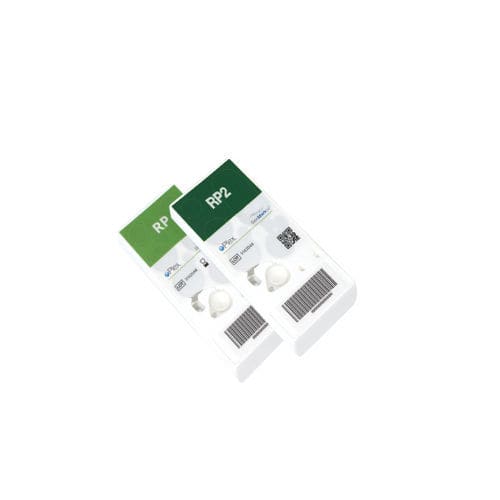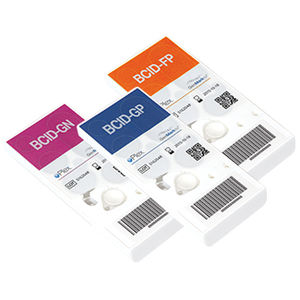
- Laboratory
- Laboratory medicine
- Flu test kit
- GenMark Diagnostics
Flu test kit RPSARS-COV-2coronavirusinfluenza A
Add to favorites
Compare this product
Characteristics
- Applications
- flu
- Micro-organism
- SARS-COV-2, coronavirus, influenza A, influenza B, adenovirus, parainfluenza, bacteria
Description
GenMark’s Respiratory Pathogen Panels identify the most common viral and bacterial organisms associated with upper respiratory infection, including SARS-CoV-2, the virus that causes COVID-19 (on the RP2 Panel).
Co-circulation of Pathogens During Respiratory Illness Season
During the annual respiratory illness season when infections tend to peak (October through March in the northern hemisphere and April through September in the southern hemisphere), influenza is often the first virus people think of.3 In the US, the CDC estimates that 8% of the population will be sick from the flu each year, varying from 3-11% depending on the year.4 Some viruses, such as Respiratory Syncytial Virus (RSV) and metapneumovirus, are also more prevalent at certain times of the year, while others, like adenovirus and rhinovirus, are common year-round. No seasonality for SARS-CoV-2 has been identified yet and infections are expected to remain elevated during respiratory illness season.
Comprehensive Pathogen Coverage Impacts Patient Care
The ePlex RP/RP2 Panels identify and detect more than 20 of the most common respiratory viruses and bacteria causing respiratory illness in less than 2 hours, allowing doctors to make informed patient care decisions faster. Rapid diagnosis is especially important for people who are more likely to become seriously ill from complications or require hospitalization, such as young children, adults 65 and older, pregnant women and those with compromised immune systems.
The emergence of SARS-CoV-2 in late 2019 sparked a global pandemic, with cases and deaths continuing to rise.
Catalogs
ePlex-RP Panel
54 Pages
Related Searches
- Assay kit
- Blood assay kit
- Infectious disease detection kit
- Respiratory infection test kit
- Clinical assay kit
- COVID-19 detection kit
- Laboratory software
- Reporting software
- Diagnostic medical software
- Automated software
- Hospital software
- POC reader
- Treatment software
- Coronavirus detection kit
- Data management software
- Hematology test kit
- Influenza A assay kit
- Influenza B assay kit
- Blood POC reader
- Interpretation software
*Prices are pre-tax. They exclude delivery charges and customs duties and do not include additional charges for installation or activation options. Prices are indicative only and may vary by country, with changes to the cost of raw materials and exchange rates.



